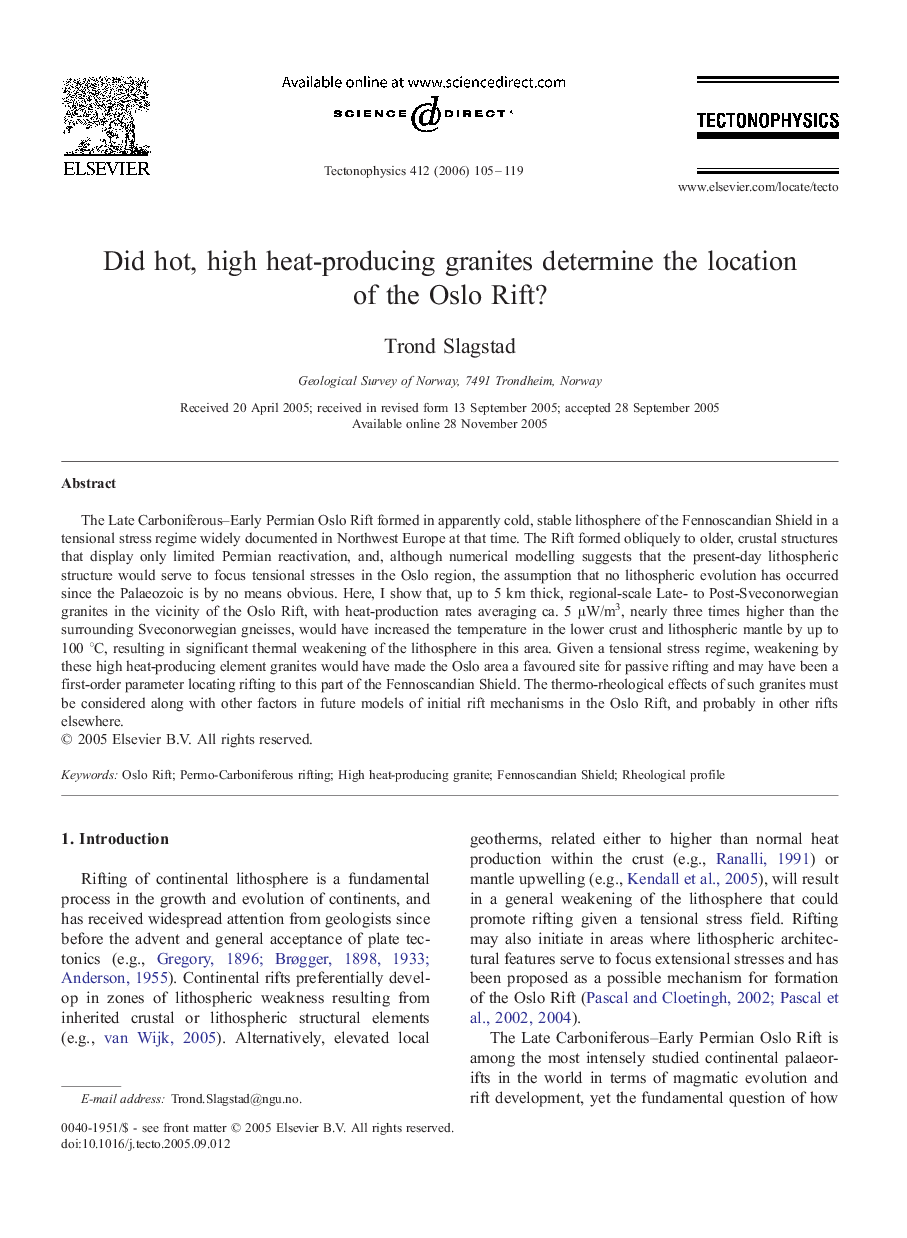| Article ID | Journal | Published Year | Pages | File Type |
|---|---|---|---|---|
| 4695286 | Tectonophysics | 2006 | 15 Pages |
Abstract
The Late Carboniferous-Early Permian Oslo Rift formed in apparently cold, stable lithosphere of the Fennoscandian Shield in a tensional stress regime widely documented in Northwest Europe at that time. The Rift formed obliquely to older, crustal structures that display only limited Permian reactivation, and, although numerical modelling suggests that the present-day lithospheric structure would serve to focus tensional stresses in the Oslo region, the assumption that no lithospheric evolution has occurred since the Palaeozoic is by no means obvious. Here, I show that, up to 5 km thick, regional-scale Late- to Post-Sveconorwegian granites in the vicinity of the Oslo Rift, with heat-production rates averaging ca. 5 μW/m3, nearly three times higher than the surrounding Sveconorwegian gneisses, would have increased the temperature in the lower crust and lithospheric mantle by up to 100 °C, resulting in significant thermal weakening of the lithosphere in this area. Given a tensional stress regime, weakening by these high heat-producing element granites would have made the Oslo area a favoured site for passive rifting and may have been a first-order parameter locating rifting to this part of the Fennoscandian Shield. The thermo-rheological effects of such granites must be considered along with other factors in future models of initial rift mechanisms in the Oslo Rift, and probably in other rifts elsewhere.
Keywords
Related Topics
Physical Sciences and Engineering
Earth and Planetary Sciences
Earth-Surface Processes
Authors
Trond Slagstad,
